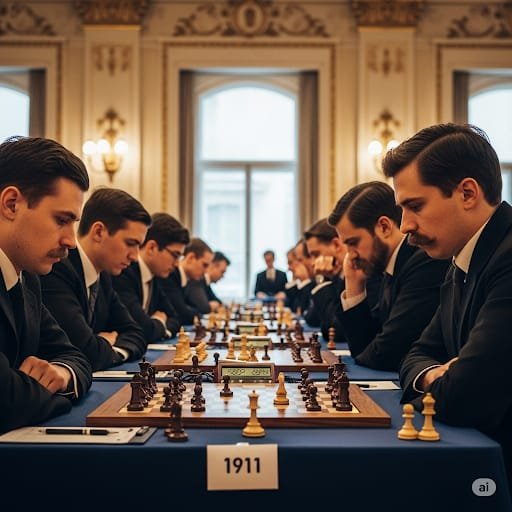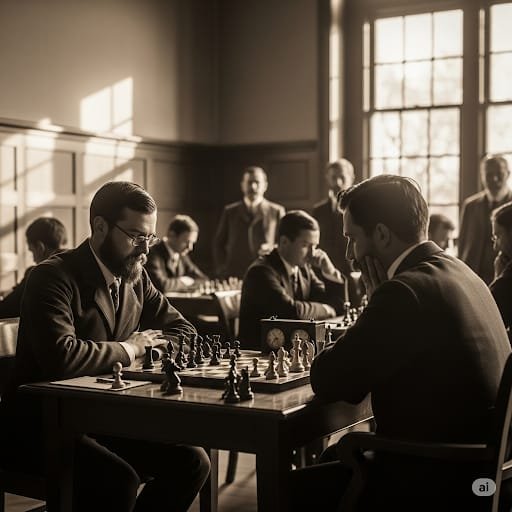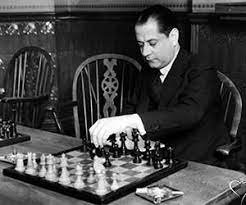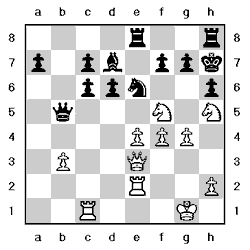"El triunfo del prodigio: Cuando Capablanca convirtió el escepticismo en leyenda" [Es-En]

En 1911, el joven José Raúl Capablanca, de apenas 22 años, aún no era una figura establecida en el mundo del ajedrez. Había demostrado su talento con victorias destacadas, como su triunfo sobre el campeón estadounidense Frank Marshall, pero su inclusión en el prestigioso torneo de San Sebastián estaba en duda. La élite ajedrecística europea no veía con buenos ojos a este recién llegado, y figuras como Ossip Bernstein y Aron Nimzowitsch se opusieron a que participara, argumentando que su falta de experiencia en torneos internacionales lo hacía indigno de competir.

Sin embargo, el destino tenía otros planes. Marshall y Jacques Mieses, reconociendo su genio, defendieron su participación con firmeza. Capablanca no solo consiguió su plaza en el torneo, sino que se encargó de demostrar que su talento no era producto del azar.
El momento clave llegó en su primera partida, donde enfrentó precisamente a Bernstein, uno de sus principales detractores. Con movimientos precisos y una combinación magistral, transformó el enfrentamiento en una obra de arte ajedrecística:
Capablanca - Bernstein, San Sebastián, 1911
1.e4 e5
2.Cf3 Cc6
3.Ab5 Cf6
4.0–0 Ae7
5.Cc3 d6
6.Axc6+ bxc6
7.d4 exd4
8.Cxd4 Ad7
9.Ag5 0–0
10.Te1 h6
11.Ah4 Ch7
12.Axe7 Dxe7
13.Dd3 Tab8
14.b3 Cg5
15.Tad1 De5
16.De3 Ce6
17.Cce2 Da5
18.Cf5 Cc5
19.Ced4 Rh7
20.g4 Tbe8
21.f3 Ce6
22.Ce2 Dxa2
23.Ceg3 Dxc2
24.Tc1 Db2
25.Ch5 Th8
26.Te2 De5
27.f4 Db5
28.Cfxg7 Cc5
29.Cxe8 Axe8
30.Dc3 f6
31.Cxf6+ Rg6
32.Ch5 Tg8
33.f5+ Rg5
34.De3+ Rh4
35.Dg3+ 1–0

La victoria no solo le otorgó reconocimiento inmediato, sino que dejó una marca indeleble en la historia del torneo. Con su juego fluido y sin fisuras, basado en una precisión posicional casi matemática, derrotó a titanes como Rubinstein, Vidmar y Tarrasch. Finalmente, con 9.5 puntos, se coronó campeón, superando por medio punto a Rubinstein y Vidmar.
Este triunfo del prodigio no solo le dio reconocimiento internacional, sino que marcó el inicio de una nueva era en el ajedrez. Capablanca había convertido el escepticismo en leyenda. Sus críticos, que intentaron frenar su ascenso, quedaron eclipsados por la genialidad de un jugador que redefiniría el juego en los años venideros. Diez años después, en 1921, Capablanca se convertiría en campeón mundial, consolidando su lugar en la historia como uno de los más grandes ajedrecistas de todos los tiempos.
Su victoria en San Sebastián fue más que un título—fue una declaración de principios. Desde aquel momento, el mundo del ajedrez jamás volvería a ser el mismo.

El texto es de mi autoría
Las imágenes fueron creadas con Gemini IA execepto la de Capablanca tomada de www.ecured.com
ENGLISH VERSION

"The Triumph of the Prodigy: When Capablanca Turned Skepticism into Legend"
In 1911, the young José Raúl Capablanca, only 22 years old, had yet to establish himself in the world of chess. He had demonstrated his talent with notable victories, such as his triumph over U.S. champion Frank Marshall, but his inclusion in the prestigious San Sebastián tournament was in doubt. The European chess elite did not look favorably upon this newcomer, and figures like Ossip Bernstein and Aron Nimzowitsch opposed his participation, arguing that his lack of experience in international tournaments made him unworthy of competing.

However, fate had other plans. Marshall and Jacques Mieses, recognizing his genius, firmly defended his inclusion. Capablanca not only secured his place in the tournament but also set out to prove that his talent was no mere stroke of luck.
The pivotal moment came in his first game, where he faced Bernstein himself—one of his main detractors. With precise moves and a masterful combination, he transformed the match into a chess masterpiece:
Capablanca - Bernstein, San Sebastián, 1911
1.e4 e5
2.Nf3 Nc6
3.Bb5 Nf6
4.0–0 Be7
5.Nc3 d6
6.Bxc6+ bxc6
7.d4 exd4
8.Nxd4 Ad7
9.Bg5 0–0
10.Re1 h6
11.Bh4 Nh7
12.Bxe7 Qxe7
13.Qd3 Rfb8
14.b3 Ng5
15.Rd1 Qe5
16.Qe3 Ne6
17.Nce2 Qa5
18.Nf5 Nc5
19.Ned4 Rh7
20.g4 Rfe8
21.f3 Ne6
22.Ne2 Qxa2
23.Neg3 Qxc2
24.Rc1 Qb2
25.Nh5 Rh8
26.Re2 Qe5
27.f4 Qb5
28.Nxg7 Nc5
29.Nxe8 Be8
30.Qc3 f6
31.Nxf6+ Rg6
32.Nh5 Rg8
33.f5+ Rg5
34.Qe3+ Rh4
35.Qg3+ 1–0

The victory not only granted him immediate recognition but left an indelible mark on the tournament’s history. With his seamless and fluid gameplay, rooted in an almost mathematical positional precision, he defeated titans like Rubinstein, Vidmar, and Tarrasch. Ultimately, with 9.5 points, he was crowned champion, surpassing Rubinstein and Vidmar by half a point.
This triumph of the prodigy not only earned him international acclaim but marked the beginning of a new era in chess. Capablanca had turned skepticism into legend. His critics, who had attempted to hinder his rise, were overshadowed by the brilliance of a player who would redefine the game in the years to come.
Ten years later, in 1921, Capablanca would become world champion, cementing his place in history as one of the greatest chess players of all time. His victory at San Sebastián was more than a title—it was a statement of principles. From that moment on, the chess world would never be the same.

The text is my own.
The images were created by Gemini IA, except for the one of Capablanca, which was taken from www.ecured.com.
Google Translate was used.
Congratulations @psicologopoeta! You have completed the following achievement on the Hive blockchain And have been rewarded with New badge(s)
Your next target is to reach 1500 upvotes.
You can view your badges on your board and compare yourself to others in the Ranking
If you no longer want to receive notifications, reply to this comment with the word
STOPCheck out our last posts:
Super, la verdad no entiendo mucho el ajedrez con esos codigos del tablero, pero es un juego muy emcionante y milenario. Buen Post!!!
Saludos. Muchas gracias. En realidad es un sistema de coordenadas bastante comprensible, desde el bando de las blancas hacia el bando de las negras (el orden horizontal de las casillas) son las filas que comienzan a nombrarse por números el 1 la más cercana al jugador de piezas blancas, hasta la octava fila más cercana al jugador de piezas negras. Y entonces las verticales de izquierda a derecha son las columnas que se denominan con letras de la "a" hasta la "h". Luego por coordenadas la casilla que le queda en el extremo inferior derecho si juega con piezas blancas es la "h1", o por poner otro ejemplo, su rey al inicio de la partida está colocado en la casilla "e1" (Casilla que corresponde a la columna "e" y primera fila. Cualquier duda aquí estamos. Todo un placer promover el Juego Ciencia.
Gracias por tu explicación, voy a ponerlo en practica!!!